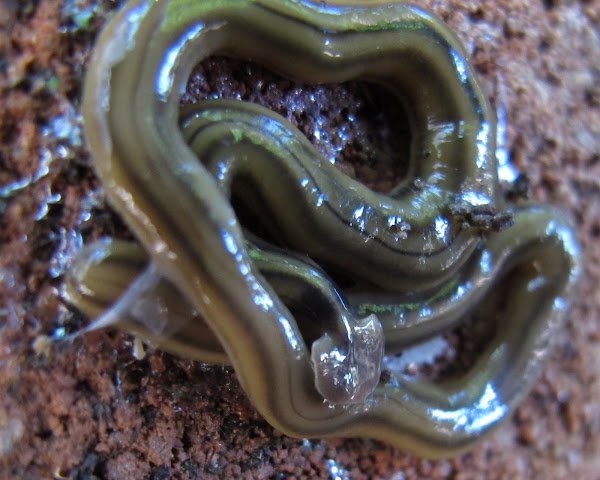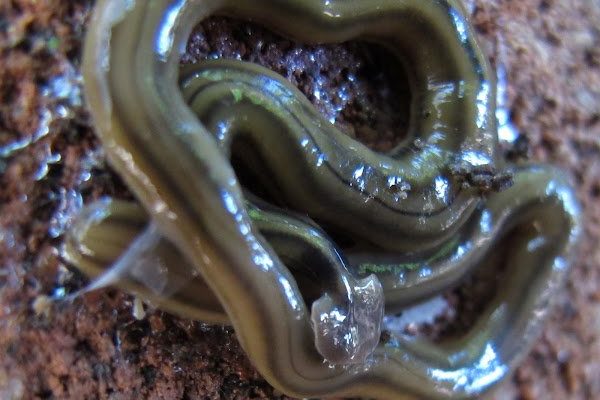
Imagine diving into a bustling underwater city, where every component works together to sustain life. That’s how ecosystems function, too. Malayan hammerhead worms fit into this picture, influencing and being influenced by other microfauna, like nematodes, mites, and microorganisms. Understanding these interactions sheds light on the delicate balance of life—and why it matters.
What is the Malayan Hammerhead Worm?
The Malayan hammerhead worm, or Bipalium kewense, is an intriguing species native to Southeast Asia. It gets its name from its distinct flat, hammer-shaped head, which looks almost like a surfboard ready to ride the waves. You might find these worms gliding over the surface of moist soil, especially in tropical and subtropical regions.
These worms are a type of predatory planarian, which means they feast on smaller organisms. Their diet primarily includes earthworms and other small invertebrates. While this may paint them as fearsome predators, they actually belong to a larger ecosystem and rely on various microfauna for survival.
How Hammerhead Worms Interact with Microfauna
The interactions between hammerhead worms and their microfauna companions can be quite complex. They’re like dance partners in a well-choreographed routine. Here’s how this interplay works:
- Predation: The hammerhead worm is primarily a predator. It hunts down smaller organisms, such as earthworms, using a glue-like substance to immobilize its prey. This predation helps regulate the populations of these smaller species in the ecosystem.
- Competition: Competition arises when multiple species vie for the same resources, such as food and habitat. Hammerhead worms compete with other predators, impacting the dynamics of the microfauna community.
- Habitat Modification: As hammerhead worms burrow through the soil, they can alter its structure, creating new habitats for other microfauna. This can encourage biodiversity by allowing various organisms to thrive in the newly formed spaces.
It’s a delicate balance, and one change can ripple through the ecosystem like drops in a pond.
The Role of Soil Microbes
One of the major players in the hammerhead worm’s ecosystem is soil microbes. These tiny organisms, including bacteria and fungi, are essential for breaking down organic matter and recycling nutrients. Here’s the thing: when hammerhead worms consume their prey, they indirectly affect the microbial community.
For instance, as the worms hunt and feed, they release nutrients back into the soil when they excrete waste. This helps maintain the health of the soil microbiome, promoting processes that are vital for plant growth. In turn, healthy plants contribute to the overall ecosystem, providing food and shelter for various species, including the hammerhead worm itself.
Interactions with Nematodes and Other Worms
Nematodes, or roundworms, are another important component of the hammerhead worm’s ecosystem. They can be found in various habitats, including soil and water. Here’s how they interact:
- Food Source: Some nematodes serve as a food source for hammerhead worms. As these worms consume nematodes, they help control their populations, which can affect soil health and plant growth.
- Predation and Competition: Just like hammerhead worms, nematodes also feed on smaller organisms. This creates a dynamic where both groups must navigate their roles as predators and competitors in the soil.
By understanding these interactions, we gain insight into how ecosystems function and flourish.
The Impact of Environmental Changes
Environmental changes, such as pollution or habitat destruction, can significantly impact the relationships between hammerhead worms and other microfauna. For example, if soil becomes contaminated, it can reduce the population of earthworms, leading to a decrease in food availability for hammerhead worms.
Additionally, changes in moisture levels due to climate shifts can affect both the hammerhead worms and their prey. You might be wondering, “Why should I care?” Well, these impacts can ripple outwards, affecting entire ecosystems and the services they provide, such as nutrient cycling and plant growth.
How Do We Study These Interactions?
Researching interactions in ecosystems like that of the Malayan hammerhead worm is no easy feat. Scientists often use a combination of field studies and laboratory experiments to uncover these dynamics. Here are some common methods:
- Field Surveys: By collecting data on worm populations and their microfauna companions in natural habitats, researchers can better understand their interactions in real-world settings.
- Controlled Experiments: In the lab, scientists can manipulate variables, like food availability, to observe how hammerhead worms and other microfauna respond. This helps isolate specific interactions.
These studies are essential for uncovering the hidden stories of life in soil and how each organism contributes to the larger picture.
The Importance of Ecosystem Balance
Finally, it’s crucial to understand that the interactions between Malayan hammerhead worms and other microfauna highlight the importance of maintaining ecological balance. Every organism, no matter how small, plays a role in sustaining life. Disruptions to one part of the ecosystem can lead to unexpected consequences down the line.
By studying these relationships, we not only learn about the hammerhead worm’s ecosystem but also gain insight into how to protect and restore our natural environments. So the next time you hear about the Malayan hammerhead worm, remember its story isn’t just about one worm—it’s about the complex web of life that exists around it.
In conclusion, the interactions of the Malayan hammerhead worm with other microfauna in its ecosystem demonstrate how interconnected life really is. Understanding these dynamics is vital for conservation efforts and for appreciating the intricate dance of life happening right under our feet. Just like in a well-tuned orchestra, every member has a role that contributes to the beautiful symphony of nature.

